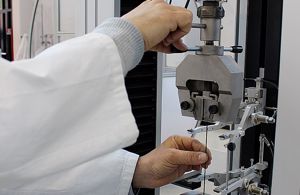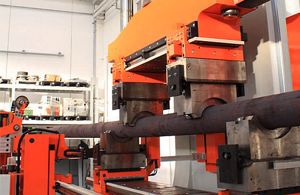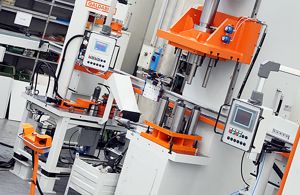-
Productos
Máquinas estáticas universales para la pueba de materiales

Máquinas enderezadoras

Prensas, Lineas automáticas y Rebordeadoras para embutido profundo

- Empresa
- Asistencia
- Calibración
- Community
- Contactos
ASTM B571, EN 28510, ISO 8510-1, EN 1939, ASTM D2861, ASTM D3330, ASTM D6862, ASTM D6252
A measured forced is applied to a test specimen in order to strip a layer from the specimen with tearing at the bonded surfaces. The significance value is the adhesion strength, that is the maximum force divided by the width of specimen
We recommend a 90° peel fixture that holds and moves the substrate as the rubber strip is peeled off by an upper grip. Pneumatic side-action grips provide appropriate solution due to ease of use, productivity and repeatability. The 90° peel fixture is able to keep this angle by using a low force sliding table that can be adjusted during test
The fixture is constituted by a bearing mounted table connected with the test system by a cable and a pulley and fixed on the rear by a spring. While the crosshead is driven in the tensile direction, the cable pulls the table to maintain a constant 90° peel angle and the spring keeps the table from reacting to inertia caused by load peaks and troughs
In this application spontaneous force changes occur constantly. Therefore, fast data aquisiton with 1000 Hz is a key factor in finding accurate test results. Our software calculates the adhesion value and allows the operator to register the observed failure type